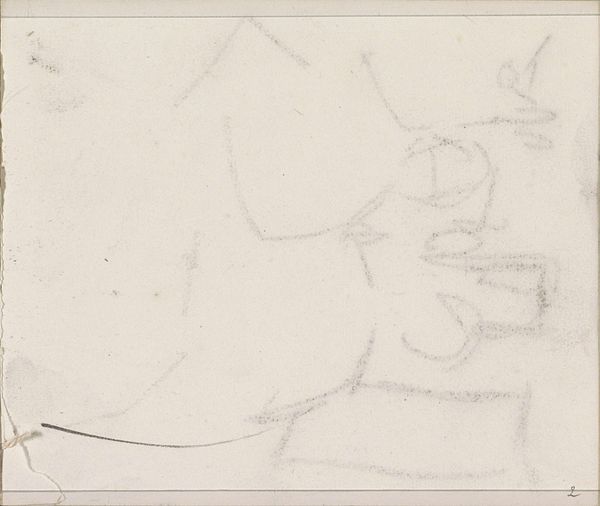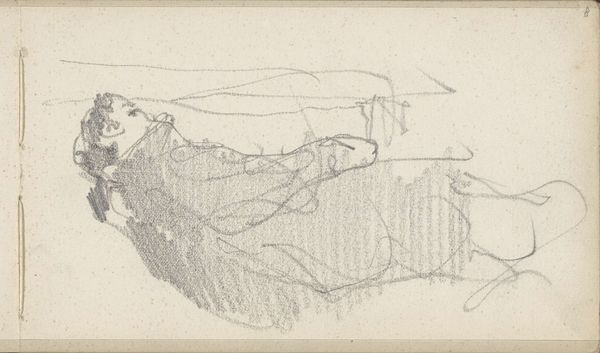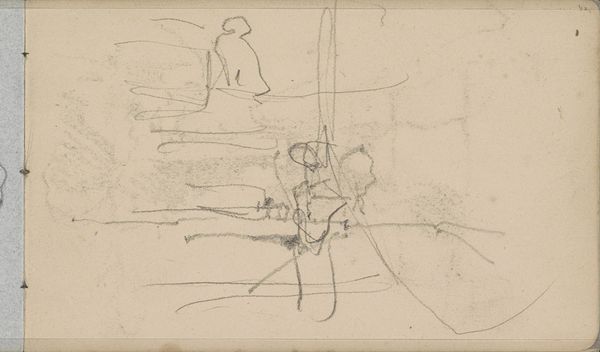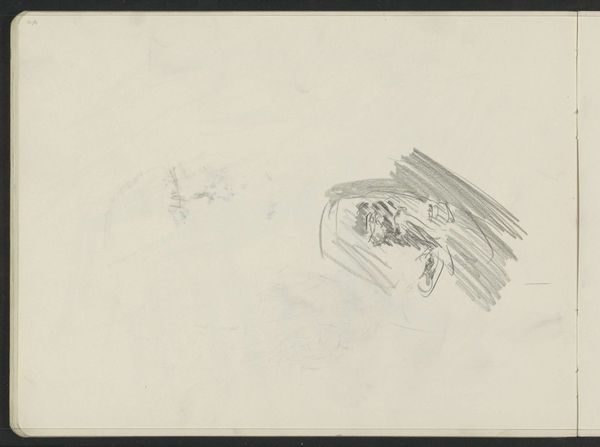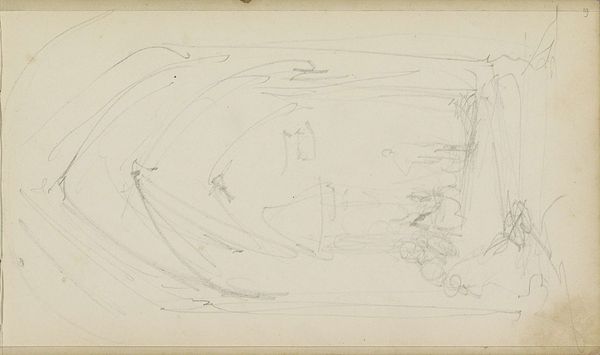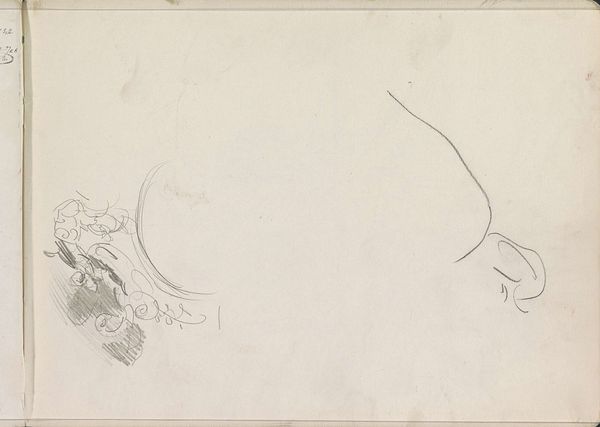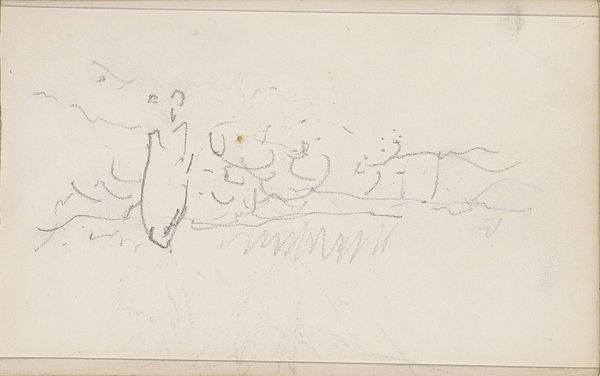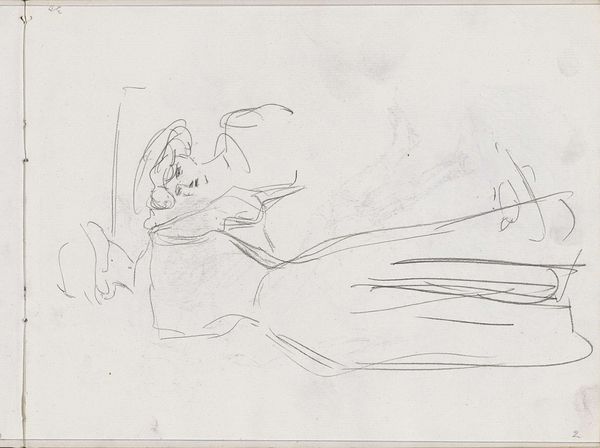
Copyright: Rijks Museum: Open Domain
Editor: So this is "Gezicht, mogelijk van een vrouw" or "Face, possibly of a woman," a pencil drawing by Isaac Israels, made sometime between 1887 and 1934. It feels very fleeting, almost like a half-remembered dream. What do you see in this piece, beyond the obvious portrait? Curator: I see layers of societal expectations and perhaps even hidden anxieties embedded in what appears as a simple sketch. Consider the time period. The late 19th and early 20th centuries saw immense shifts in gender roles. How much is this drawing representative of his subject? What's visible or obscured? What societal pressures might have informed Israels’ mark-making? Editor: So you're saying the incompleteness of the image isn’t just the style, but it hints at something more? Curator: Precisely. Observe the very light touch with which the artist depicts her, a fleeting image of feminine identity, conforming to a specific type but also receding back into abstraction. The sketch mirrors the cultural constraints placed upon women during this era. Are they wholly visible? Is her presence valued? The pencil lines themselves create a narrative of both presence and erasure. Editor: That’s a very different way of seeing it! I was just thinking about it in terms of Impressionism. Curator: Ah, yes, and note how impressionism becomes the visual language for cultural uncertainty, how the visible world fails to capture or to constrain feminine reality! Think of how different artistic movements encode social, political, and psychological anxieties into form! What did this brief conversation reveal about it? Editor: That even seemingly simple sketches can hold deeper meanings about society and individual experience. I need to keep asking "Why THIS way?" and "What does that leave OUT?"
Comments
No comments
Be the first to comment and join the conversation on the ultimate creative platform.
